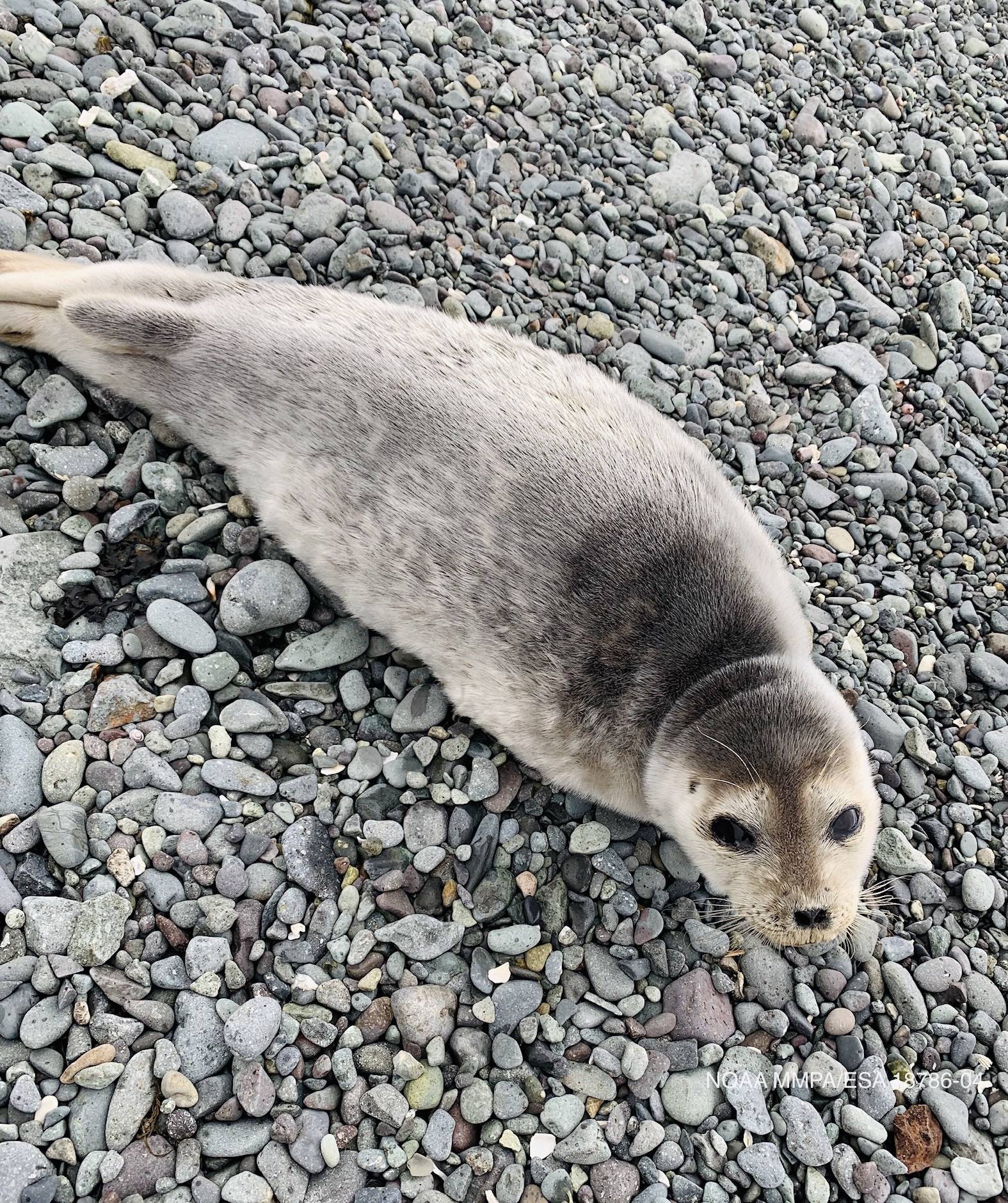A ringed seal found in Dutch Harbor arrived at the Alaska SeaLife Center on Wednesday after being admitted to the center’s Wildlife Response Program.
According to a press release from the SeaLife Center, Dutch Harbor is outside of the normal range for ringed seals. The seal admitted Wednesday had been observed on a beach for several days before people realized it was losing weight. It was moved to the SeaLife Center after the move was approved by the National Oceanic and Atmospheric Administration.
Malnourishment, dehydration and possible infection were among the veterinary team’s first concerns following their initial admit exam of the seal. While they conduct further examinations of the seal, the team is providing it with initial stabilizing treatments and working to further understand the severity of its condition.
The Alaska stock of ringed seals is the only stock recognized in U.S. waters, according to the SeaLife Center. While there are four subspecies of ringed seals, arctic ringed seals are the only ones found in the U.S. In December of 2012, ringed seals were listed as “threatened” under the Endangered Species Act.
In the wild, ringed seals live mostly in arctic waters near ice floes and pack ice. Their diet consists of fish and invertebrates like shrimp and herring and face the greatest threat from subsistence hunters, from polar bears and from impacts of climate change on pack ice. Ringed seals are the most common seal in the arctic.
The seal’s admission to the center comes as season two of NatGeo WILD’s show, Alaska Animal Rescue, comes to a close. The show follows first responders, veterinarians and animal caretakers from the SeaLife Center, the Alaska Wildlife Conservation Center in Portage and the Alaska Raptor Center in Sitka. Season one of the show can be viewed on Disney+.
More information about ringed seals and about the SeaLife Center’s new seal can be found at alaskasealife.org.
Reach reporter Ashlyn O’Hara at ashlyn.ohara@peninsulaclarion.com.

